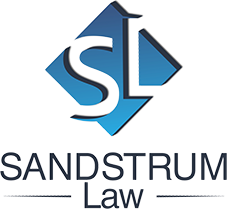1. Investors: Number and qualification
(a) LLC: No restrictions on number or qualifications for members.
(b) S Corp: Limited number of shareholders with several types of taxpayers barred from membership.
2. Classes of ownership
(a) LLC: Unlimited variations in ownership and participation of members.
(1) Separate allocations from sources and types of income allowed.
(b) S Corp: Only one class of stock, but difference in voting rights not treated as a separate class.
(1) No separate allocations allowed.
3. Tax on formation of entity
(a) Normally tax-free to both LLC and S Corp unless liabilities assumed (or property taken subject to liabilities) exceed transferor’s basis.
(1) Provision governing S formation (I.R.C. § 351) is more restrictive, however, because of requirements imposed to achieve exempt status for transaction.
4. Limited liability of members
(a) Both entities provide limited liability status to members.
5. Tax basis of member’s interest
(a) LLC: Cash, basis of contributed property and services, and member’s share of entity’s debt.
(b) S Corp: Cash, basis of contributed property and services, and loans to corporation.5
6. Taxability of income
(a) LLC and S Corp: Taxed directly to members even if not distributed; character of income and deductions retained in hands of members.
7. Deductibility of losses
(a) LLC: Losses available to members subject to at-risk rules and passive activity loss rules. Liabilities of LLC added to basis against which the at-risk rules apply.7
(b) S Corp: Same as LLC only liabilities of S Corp do not increase basis against which the at-risk rules apply.
8. Limitation on passive investment income
(a) LLC: None.
(b) S Corp: A tax applies on passive investment income that exceeds 25% of gross receipts.
(1) Excess passive income can also cause loss of S status.
9. Elimination of double taxation of income
(a) For most purposes, the LLC and S Corp are equally successful in avoiding double tax.
10. Salary payments to members
(a) LLC: Ordinary income in the form of a guaranteed payment from entity that is treated like salary.
(b) S Corp: Treated as salary.
11. Fringe benefits for members
(a) LLC: In general, none of the major fringe benefits are available for members. Members can adopt HR 10 (Keogh) retirement plan on an individual basis, however. The statutory fringe benefits are also available to members.
(b) S Corp: No restriction on benefits for members owning 2% or less of stock. Those with more than 2% are treated as partners and therefore are denied most of the ordinary fringe benefits as in an LLC.
12. Nonliquidating distributions of money
(a) LLC: No gain or loss unless distribution exceeds member’s tax basis in LLC.
(b) S Corp: Normally a return of capital to extent of tax basis in shares. Excess is a dividend if earnings and profits present; otherwise capital gain.
13. Nonliquidating distributions of property
(a) LLC: No gain or loss to member or entity. Entity’s basis carries over to distributee. Exception for disproportionate distributions and for unrealized receivables and appreciated inventory.
(b) S Corp: Gain but not loss results from nonliquidating property distribution as if property had been sold by S Corp. Excess of value of property over basis is also gain.
14. Sale of ownership interest
(a) LLC: Capital transaction, but portion attributable to unrealized receivables and appreciated inventory is ordinary income.
(b) S Corp: Capital transaction.
15. Increase in basis of interest on purchase of interest
(a) LLC: An adjustment to basis can be made to reflect buyer’s cost in comparison to partnership basis in assets.
(b) S Corp: No right to adjust basis.
16. Liquidation of entity
(a) LLC: No gain or loss to entity. Member recognizes gain or loss to extent cash received exceeds basis. Loss recognized if cash, unrealized receivables, or inventory received. Gain or loss is capital except to extent of unrealized receivables and substantially appreciated property.
(b) S Corp: Gain or loss to entity on sale of assets or distribution to shareholders. Capital transaction to shareholders, who are taxed only to extent distributions exceed basis.
Westlaw. © 2014 Thomson Reuters. No Claim to Orig. U.S. Govt. Works.
